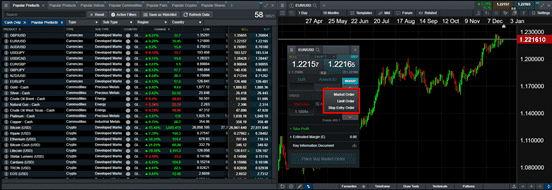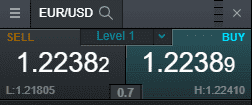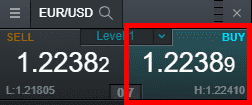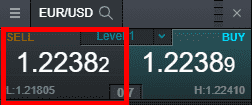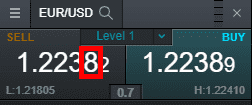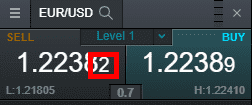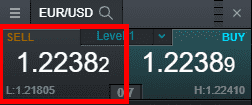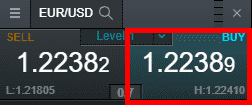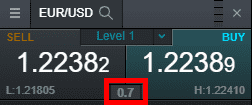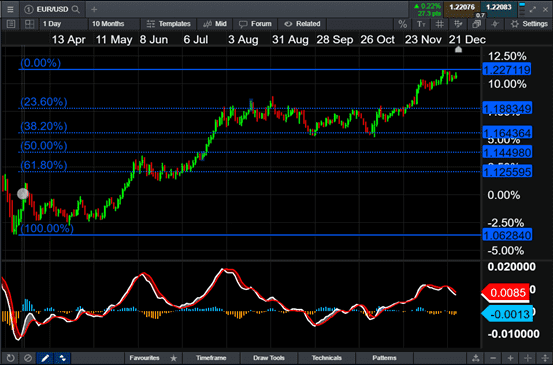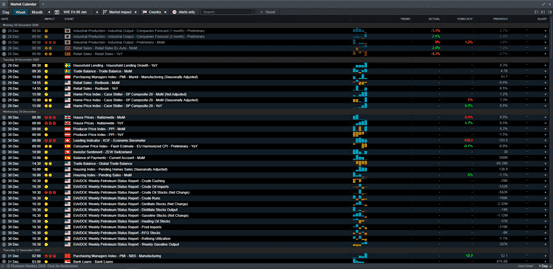How to Get Started in Forex Trading
If you want to get into Forex trading, here are five steps you should take to get started..
Decide what kind of trader you want to be.
This will depend firstly upon how much time you are able and willing to dedicate to trading. If you can check in once a day, you will need to be a position trader. If you can spare a few minutes a few times a day, you will be a swing trader. If you wish to dedicate anything between half an hour and a few continuous hours daily (or on some days), you will be scalping. There is no reason why you cannot adopt more than one style if you have enough time to manage it all. Beginner traders are advised to start with swing or position trading as these styes are less challenging for most than scalping. The type of trader you want to be will affect which Forex brokers are best for you.
Decide how much money you can afford to risk trading Forex.
It is essential that you only trade Forex with money you can afford to lose. This is because most beginner Forex traders suffer heavy losses within a few months. You do not have to be one of them, but trading is an uphill struggle for most beginners, so be realistic and conservative about risk. On the other hand, be aware that the more funds you can deposit with a Forex broker, the better deal you will typically get regarding fees and costs.
Choose your trading strategy or strategies.
Every Forex trader needs at least one basic strategy to suggest trade entries and exits, even if an element of personal discretion is used. Any strategy should have a long track record of a positive “edge”: any strategy that has not been extensively back tested is worthless. It is tempting to think you can buy access to a “holy grail” strategy, but there are plenty of free Forex trading strategies for beginners you can find online to use which are just as good as any paid material.
It is important to back test any trading strategy use because you need to have confidence that a strategy will work over the long-term to use it effectively.
Read as much as you can about Forex trading. Do not worry about learning about all the many indicators and features. Focus instead on reading honest explanations and debates from real traders who admit to losing streaks, because this will be genuine advice and not marketing.
Make a shortlist of suitable Forex brokers and open demo accounts.
Every Forex broker has a minimum deposit requirement, and some brokers are better for certain styles of trading. After answering the first two questions above, you will get a better idea of which Forex brokers will be best for you. Research brokers using reputable broker reviews of the best Forex brokers for beginners and make your shortlist, and open demo accounts at each. These risk-free test accounts require no deposit, just registration with the broker, and can be opened very quickly and easily. Forex demo accounts are usually valid for 30 days, although some brokers allow their demo accounts to run for much longer, or even for unlimited time in a few cases. Trade your strategy on the demo accounts.
Choose at least one Forex broker from the shortlist after experiencing the demo account trading.
You are now ready to start trading with real money once you make the deposit into your live account(s). You will find this has a different feel to demo account trading. Make sure you do not risk too much per trade and try not to get angry about losing trades, which are inevitable. Keep assessing what you do from time to do and keep track of your results. You will probably not achieve quick success but will improve with practice. Until you become a confident and profitable trader, the most important thing is not to lose too much money.
Forex Trading Example
Here is a trading example using the EUR/USD, the most traded and most liquid currency pair, which has the tightest spreads at every online Forex broker. Let us take an exchange rate of 1.2225, the buy (ask) price with 1.0 lot in volume and leverage of 1:500, a take profit of 1.2300, and a stop-loss of 1.2200.
Buy 100,000 currency units (1.0 lot) at 1.2225 = $122,250
The margin requirement is $122,250 / 500 (1:500 leverage) = $244.50
The take profit at 1.2300 equals a 75-pip move (1.2300 - 1.2225) x 100,000 (1.0 lot) for a profit of $750
The stop loss at 1.2200 equals a 25-pip move (1.2225 - 1.2200) x 100,000 (1.0 lot) for a loss of $250
The risk/reward ratio is 1:3 ($750 / $250)
What is Forex Trading?
Forex trading, also known as foreign exchange or FX, refers to buying and selling currencies against each other. Over one hundred currency pairs exist, and the most liquid one is the EUR/USD. Due to global trade and finance, the Forex market, where currency pairs trade, is the most liquid one. Forex trading takes place 24/5 and has the lowest capital entry requirements, together with the highest leverage. It is also ideal for automated trading solutions, and the asset selection remains small compared to equity trading. Most brokers provide between 50 and 75 currency pairs, and the interconnectivity and liquidity allow Forex traders to deploy focused trading strategies. Scalpers often focus on a handful of currency pairs. Forex trading provides many opportunities and is accessible to all traders with few geographical restrictions. With the demand from new Forex traders rising, it unlocks new business potential for many. Our Forex trading for dummies crash course will outline strengthen your knowledge about Forex trading from where you can chart a profitable course forward. Just remember that you must learn before you can earn. Many new traders skip this part, and the outcome is always the same.
How do Currency Markets Work?
Unlike equity and commodity markets, the Forex market is decentralized and trades 24/5. It consists of a global network of banks, hedge funds, private equity funds, exchange-traded funds, mutual funds, businesses, and individuals. All market participants continuously buy and sell currencies in the over the counter (OTC) market. It creates constant price fluctuations and trading opportunities. There are no central locations, but four primary global trading hubs exist. They are Sydney, Tokyo, London, and New York. The opening and close of the London and New York trading sessions, as well as the London / New York session overlap, present five of the most significant and liquid trading times, and also when most retail traders are unable to trade due to their employment elsewhere. Forex trading is a profession, and a highly demanding one, and unless traders treat it as such, losses across portfolios are all but guaranteed. Other notable trading hubs include Zurich, Hong Kong, Singapore, Frankfurt, and Paris, with numerous emerging ones located in BRICS and ASEAN countries. Traders can buy and sell, also known as going long and short, respectively, and profit in either direction. Due to the fast-moving nature of currency markets, automated trading solutions provide a competitive edge and account for over two-thirds of all trading volume outside Japan. Since London remains the most liquid global financial center, numerous Forex trading for beginners UK editions emphasize its unique Forex trading infrastructure.
What Moves Forex Markets
Understanding what moves Forex markets is essential to the success of Forex traders. Remember that currency pairs always consist of two currencies. Therefore, traders must consider developments in both, as either one can move price action. The three primary Forex market movers are economic data, central bank policy, and geopolitics. Forex traders often provide the quickest reaction to any event. Since economic reports follow a set schedule, in-depth calendars give Forex traders sufficient visibility. Some traders attempt to profit from the often-volatile period before and after a release, known as news trading. Central bank meetings are equally transparent from a scheduling perspective and can introduce long-term trend changes or force breakouts and breakdowns. Geopolitical events will surprise Forex markets as they are 100% random events. It adds excitement and trading opportunities. It also adds uncertainty and losses for those who leave their portfolios unprotected and fail to deploy risk management. Most Forex for dummies courses fail to cover risk management adequately as part of a successful trading strategy.
History of Forex
Forex trading has existed since countries began minting currencies, but today’s Forex markets remains relatively new. Some equity markets exist for hundreds of years, but it was not until the 1971 Bretton Woods accord that Forex markets became operational. Following the 1971 agreement, major currencies became free-floating, driven by supply and demand, economic factors, central bank actions, and geopolitical developments. It created the need for Forex markets, where operators pair currencies against each other. Over the past decades, more Forex pairs became available for trading. Demand continues to rise, and trading related services expand to satisfy it. Thousands of brokers, asset management firms, analysts, signal providers, risk managers, and lawyers cater to Forex traders. It also provides a significant boost to the economies of trading hubs. With automated trading strategies representing the fastest-growing segment of finance, the Forex market became one of the first to embrace and support the trend. It was not until the release of the MT4 trading platform by Cyprus-based MetaQuotes in 2005 that online Forex trading added hundreds of millions of retail traders. MT4 was the first full-featured version, and the vision of MetaQuotes allowed it to take a dominant position, which it continues to enjoy today. The advantages of Forex trading is that there is lots of free information, webinars and free forex ebooks about it available on the Internet.
Forex for Hedging
Many international companies use the Forex market to hedge their currency exposure and even to lock in future exchange rates to gain clarity over operating expenses. One example is a manufacturing company producing goods in the US and selling them in Japan. The production cost and the selling price remain fixed in U.S. Dollars and Japanese Yen, respectively. Since the USD/JPY currency pair fluctuates, the product profitability will vary on the exchange rate, excluding inflation. The manufacturing company may lock a specific exchange rate in forward or swap markets. It offers a hedge against currency movements and provides more stability and visibility over expenses. It also reduces profit potential if the exchange rate moves in the direction favoring the manufacturing company. Airlines are another prominent example, as they hedge against price movements that impact jet fuel, which like most commodities, remains priced in U.S. Dollars. By ensuring a fixed exchange rate, the company maintains short-term price control over operating expenses. Some companies employ a skilled trading desk and use Forex for hedging to add to the operating profits, especially commodity firms and companies with dominant exposure to the sector. Equity traders also use Forex for hedging, as currency pairs offer a low-cost and highly liquid tool to hedge trading portfolios.
Forex for Speculation
Speculation is one of the primary reasons many traders flock to the Forex market and learn how to trade Forex. Since currency pairs continuously move 24/5, impacted by numerous factors throughout each trading session, traders have many trading opportunities. It increases the profit potential, adding to the attractiveness of Forex trading. There are many ways to speculate on how one currency pair will move against another one. Some traders prefer to do so on fundamental developments like economic data, central bank announcements, and geopolitical events. Others take their trading clues from technical analysis, using indicators and past price action to predict future currency fluctuations. Both sides have proponents and opponents, often resulting in massive disagreements over which approach grants traders an edge. Profitable traders understand the importance of both, allowing them to speculate on price action in the Forex market with greater accuracy. Traders must understand which market events lead to short-term fluctuations within an established trend and which ones possess the ability to change existing trends. Forex for speculation can yield remarkable profits, especially in conjunction with leverage and risk management, but it takes years to master it. Traders use scalping to speculate on ultra-short-term Forex moves, generally based on one-minute (M1), two minutes (M2), and five minutes (M5) charts, with technical indicators as the basis for entry and exit positions. Automated trading fulfills a defining role for traders who speculate in the Forex market for a living or derive a substantial portion of their income from it.
Currency as an Asset Class
Besides hedging and speculation, currencies offer investors two appealing income avenues, making them an asset worth accumulating in long-term portfolios. Given the liquidity of the Forex market, portfolio managers remain flexible. They can rotate out of positions with ease if conditions change. The most obvious way to profit from currencies is via exchange rate fluctuations. Identifying long-term fundamental trends and using technical analysis for entry opportunities is one of the most used trading strategies. They ignore short-term economic reports and focus on multi-month scenarios supported by slow-moving technical indicators. Another way to earn money from a currency pair as an asset class is via interest rate differentials. Before global central banks ruined the financial system by slashing them to zero or near zero, and in some cases below zero, one of the most deployed strategies was a carry trade. Carry trade refers to short a currency pair with low-interest rates and buy one with high-interest rates. The Japanese Yen was the primary short-selling target, with the British Pound the top long positions, making the GBP/JPY a highly traded currency pair. Since the 2008 global financial crisis, carry trades became riskier as all major currencies have low-interest rates, while high-risk emerging markets maintain higher ones.
Forex Trading Risks
While Forex trading provides many opportunities, it also carries significant risks, as the retail market is almost entirely closed over weekends. The interbank market, where banks trade with each other and determine exchange rates, faces various regulatory oversight, depending on their location. Banks have to accept numerous risks, including sovereign, credit, and counterparty risk. Each bank deploys a risk management department to shield itself as much as possible. Forex products are not standardized, and different regulators approach Forex trading with varying degrees of rules, while a few do not regulate it at all. Therefore, trading from a competitive jurisdiction can offer traders an edge, with the EU the least competitive one. Supply and demand dictate currency pair prices, but retail traders of market-making brokers may face re-quotes, and stop-loss hunting, exposing them to risk imposed by untrustworthy brokers.
Managing the risks of Forex trading
Managing the risks of Forex trading will define the outcome of any trading strategy. Forex trading for dummies mostly covers other aspects, and misleading label leverage is why retail traders lose money. The lack of risk management leads to losses, and most traders apply a static number for their stop-loss orders in a dynamic market. While it offers protection and ensures trading losses do not exceed a set amount, it is far from an in-depth and effective risk management strategy. I urge all traders to learn about managing the risks before thinking about trading strategies and order placement.
Two order types to assist with managing the risks of Forex Trading:
- Stop-loss order - It closes a trading position at a set level. A stop-loss order does not guarantee the price. Execution is dependent on market conditions and the liquidity of brokers, but most will trigger at or near the set level. Some brokers provide a guaranteed stop-loss order for a fee. It ensures that the entered price is honored. A trailing stop loss will adjust with price action. Professional traders and profitable retail traders use a stop-loss order to close trades at a profit.
- Limit order - It executes an order at a future price or superior level. A buy limit order and a sell limit order will only trigger at the set price or below and above, respectively. It offers traders more control over order placement. While the price is guaranteed, the order filling is not, and again depends on market conditions and broker liquidity. Limit orders together with stop-loss orders can protect the downside of portfolios, but traders may also miss trading opportunities in fast-moving markets.
Pros and Challenges of Trading Forex
Before new traders determine if Forex trading is right for them, I recommend that traders consider the pros and the challenges of trading Forex. It can provide the necessary insight to make an informed decision. I believe the below list offers an objective summary of items each trader must understand before moving ahead.
The pros of trading Forex:
- The Forex market is the most liquid financial market, creating countless trading opportunities every day. It presents all trading strategies with excellent trading conditions, and traders can earn money in either direction.
- Low capital requirements and high leverage make it accessible to traders of all portfolio sizes. Most online brokers have low to no minimum deposit requirements, allowing clients to deploy a portfolio-building strategy suitable to their needs.
- The limited asset selection of just above 100 currency pairs offers traders more oversight and a focused approach to trading. Since many currency pairs are interconnected, most traders prefer to trade only a handful of currency pairs to avoid overexposure.
- Forex trading is decentralized and takes place 24/5 and unofficially begins with the trading in Australia and ends with trading in New York. London remains the dominant trading hub, and other primary ones include Tokyo, Zurich, Hong Kong, Singapore, Frankfurt, and Paris. Emerging hubs consist of member countries of BRICS and ASEAN.
- Limitless educational content can be accessed free of charge, providing valuable lessons. It includes currency trading for dummies courses, more detailed how to trade Forex lessons, and specific editions like Forex trading for beginners UK.
- A rich support infrastructure is available, including tens of thousands of analysts, Forex trading signals, and account managers.
- Forex trading is ideal for automated trading solutions, decreasing the gap between retail traders and professional ones. While they are costly, everyone interested in trading Forex for a living must consider it as an investment.
The challenges of trading Forex:
- Leverage remains one of the most misunderstood and misused trading tools. The bulk of market participants equate it to trading losses in the retail sector. I cannot stress enough that the lack of risk management results in losses and not leveraged trading products.
- The amount of misleading information represents one of the most significant challenges, especially for new retail traders. False promises of profits from micro portfolios, no knowledge needed, and limited time spent trading remain challenges. They create scores of new traders that find nothing more than losses and disappointment.
- Forex trading is one of the least respected professions, as most do not consider it as such. They approach it with the wrong mindset and fail to understand that successful Forex trading is one of the most demanding professions.
- New traders skip the learning part of Forex trading, ignore risk management, and prefer to deploy limited resources to trading. It requires an understanding of fundamental aspects like economic reports, central bank policy, and geopolitical events. Technical indicators of Forex trading are equally important, and how both interact and complement each other is the most defining aspect of a profitable Forex trader.
- Scams and fraud pry on new retail traders ignoring the facts. They follow social media marketing campaigns and fall victim to avoidable malpractice, including from scores of brokers.
Base Currencies and Quote Currencies
Forex trading is done via currency pairs, consisting of two currencies, for example, the EUR/USD. The former is the base currency, and the latter the quote currency. A EUR/USD price of 1.2220 means that for €1, traders will receive $1.2220. Traders always buy or sell one currency against another one, which forms the basis of Forex trading. A buy order, or going long, in the EUR/USD will result in profits if the price increases and lose money when it decreases. A sell order, or going short, in the EUR/USD, yields the opposite, earning traders a profit if the price decreases and losses if it increases.
Forex Pair Categories
Currency pairs in the Forex market belong to three distinct categories, majors, minors, and exotics. Most major currency pairs remain associated with the US Dollar, the reserve currency of the world. The three exceptions are the EUR/GBP, the EUR/CHF, and the EUR/JPY. Therefore, the ten major currency pairs consist of the EUR/USD, the world’s most liquid currency pair, the GBP/USD, the USD/CHF, the USD/JPY, the three commodity currencies USD/CAD, AUD/USD, and NZD/USD, and the three non-US currency pairs EUR/GBP, EUR/CHF, and EUR/JPY. Most traders prefer the ten, as they remain the most liquid and carry the lowest spreads. They are ideal for short-term trading strategies like scalping and account for over 85% of all daily trading volume.
Minor currency pairs consist of any non-US Dollar pairing between the major currency pairs. Some examples include the GBP/CHF, the AUD/JPY, and the AUD/NZD. They are less liquid, have lower trading volumes, and the mark-up is notably higher. They present attractive opportunities, but traders must deploy different strategies. Exotic currency pairs represent all other assets in the Forex market. The USD/BRL, the USD/INR, the USD/TRY, the USD/SEK, the EUR/PLN, the EUR/ZAR, and the EUR/CZK are seven examples. Trading emerging markets presents an excellent cross-currency diversification trade and access to higher interest rate environments for carry trades but comes with unique sets of risks and challenges.
What is the Spread in Forex Trading?
The spread in Forex trading refers to the difference in the sell (bid) and buy (ask) price of a currency quote. The ask price is always higher than the bid price, and by default, traders face a loss when opening a trade. Brokers apply mark-ups on currency pairs, which represent their profit. The raw spread of the EUR/USD, derived from supply and demand on the interbank market, is usually between 0 pips and 0.1 pips. Brokers who deploy an electronic communication network (ECN) execution model provide clients access to it for a commission cost per volume. I recommend ECN trading for most traders, as it enables all trading strategies, and most brokers provide a volume-based cash rebate program, which lowers the final trading costs.
Market makers offer commission-free trading with higher spreads. A competitive one is 0.4 pips for the EUR/USD, which has the lowest mark-up due to its liquidity and trading frequency. Anything up to 0.7 pips is acceptable, while I recommend traders avoid anything above that. The spread in Forex trading remains the most significant direct trading costs. In a US Dollar base account, 1.0 pips in the EUR/USD equals $10. Therefore, if the EUR/USD price moves from 1.2220 to 1.2221, a trader who bought this currency pair has a floating profit of $10, and one who sold has a floating loss of $10. Buying 1 lot of EUR/USD at 1.2220 with a spread of 0.7 pips will show an immediate loss of $7 without price movement.
The below example shows the EUR/USD with 0.7 pips spread, displayed between the sell and buy buttons.
How to Read a Forex Quote?
Reading a Forex quote is simple and straight forward. Each consists of two values, sell (bid), and buy (ask), while the difference is the spread. In the below EUR/USD example, the Euro is the base currency, and the US Dollar is the quote currency. Traders who wish to buy €1 with US Dollars require $1.22389, the ask price, to do so. Those who want to sell €1 will receive $1.22382, the bid price. When only one value exists, it always refers to the buy (ask).
Long & Short
Buying and selling in the Forex market is an exchange of the base currency for the quote currency, hence the name foreign exchange market, usually abbreviated to Forex or FX. Traders can profit from price action in either direction. Those who want to buy a currency pair will do so at the buy (ask) price and those who sell at the sell (bid) price.
Long, going long, or taking a long position refers to buying a currency pair. Traders who buy will do so with the quoted buy (ask) price.
Short, going short, or taking a short position refers to selling a currency pair. Traders who sell will do so with the quoted sell (bid) price.
Flat or Square
Traders with no positions in the Forex market are flat, which means zero exposure to price action. Closing an open trade is known as squaring, leaving portfolios flat. Each industry has a unique terminology that often confuses new entrants. A Forex glossary usually covers them, proving the best resource. Traders may also consult one of the many Forex for dummies guides for assistance.
Common Forex Terms
Understanding the most common Forex terms will decrease the learning curve. It will allow new traders to understand educational material better and accelerate the learning process.
Pips, Lots, and Margins
A pip is the fourth decimal in a non-JPY related currency quote, or the second decimal in a JPY-related quote. In our EUR/USD example, looking at the sell price of 1.22382, the number eight is a pip. An increase to 1.22382 results in a 1.0 pip advance.
A growing number of brokers provide five decimal quotes, known as a pipette. Each pip consists of ten pipettes. A price move from 1.22382 to 1.22383 is equal to one pipette. Since the raw spread for the EUR/USD is 0.0 pips, meaning the sell (bid) and buy (ask) prices are identical, the smallest quoted increment is 0.1 pips or one pipette.
Currency volumes remain expressed in lots. 1 lot is equal to 100,000 currency units, and if a trader sells 1.0 lots in the EUR/USD, it refers to exchanging 100,000 Euros for US Dollars. In other words, a trader exchanged €100,000 and received $122,382, using our EUR/USD example. In a US Dollar base account, 1.0 pip for 1.0 lot in the EUR/USD equals $10. A mini lot is 10,000 currency units or 0.10 lots, while a micro-lot is 1,000 currency units or 0.01 lots, which is the minimum transaction size at most brokers.
Since Forex trading is available in margin accounts, traders do not have to pay the full amount of the transaction value, but only the required margin. The margin requirement depends on the currency pair and the jurisdiction of the broker. The EU forced brokers into an uncompetitive position, limiting leverage to 1:30, equal to a margin requirement of 3.33%. The UK may revert to the standard of 1:500 following the end of the Brexit transition period. It is available in Australia and all other trading-friendly regulatory environments and equals a margin requirement of 0.50%. In our above example, rather than needing $122,382 for the transaction, a trader must have the required margin of $611.91 or 0.50%. A 0.01 lot trade requires $6.1191, enabling traders with relatively small deposits to trade Forex.
What is a Bid?
The bid is the sell price of a currency pair. It is almost always lower than the ask price except at an ECN broker during times of heavy market turbulence. Traders who go long a currency pair will exit their position at the bid price, while traders who go short will enter at the bid price and exit at the ask price.
What is Ask?
The ask is the buy price of a currency pair, and almost always higher than the bid price. Short sellers in a currency pair will close their position at the ask price, and those with long positions will do so at the bid price.
What is Spread?
Spread is the difference between the bid and ask price. At market makers, they include the broker mark-up. At ECN brokers, traders have access to raw spreads available in the interbank market, sourced from multiple liquidity providers.
Risk/Reward Ratio
A risk/reward ratio displays an acceptable risk for a set reward. For example, if a trader places a take-profit at 50 pips from a Forex trade (the reward) and places a stop-loss order at 20 pips (the risk), the risk/reward ratio is 1:2.5. It divides the profit potential by the downside potential. Most traders seek a minimum between 1:2 and 1:3.
Different Ways to Trade Forex
There is more than one way to invest, speculate, or trade Forex. I have outlined the following four as they account for most of the daily turnover.
- Futures - Currency futures are contracts that lock in a specific exchange rate at a future date and an obligation to deliver. They are well-regulated and less liquid but allow companies to control expenses. They were created by the Chicago Mercantile Exchange (CME) in 1972.
- Options - Options contracts give the holder the right but not the obligation to acquire the underlying currency pair at a specific date on the expiry date. Traders often use options to hedge their positions.
- ETFs - Exchange-traded funds entered the scene in December 2005, when Rydex, now Invesco, launched the Euro Currency Trust. ETFs provide traders with a passive asset to participate in the Forex market. It can consist of a single currency or basket of currencies.
- Spot FX - This is the core of the decentralized Forex market, while the above three trade on centralized markets with regulatory oversight. Spot FX is an over the counter (OTC) product, traded 24/5, and refers to the exchange on the spot of a currency pair at market prices.
Forex Market Analysis
One of the most essential, repetitive, and demanding tasks of Forex trading is Forex market analysis. Successful traders either use technical analysis, fundamental analysis, or a combination of both to identify trading opportunities, entry levels, stop-loss, and take-profit values and exit prices. I recommend understanding both and learning how to use them together, which will improve Forex trading results.
Technical Analysis
Technical analysis uses past price action, chart pattern formation, and mathematical indicators to determine future moves. It is ideal for short-term trading strategies but requires intensive research, trial-and-error testing, and fine-tuning. Automated trading solutions are excellent to assist traders with technical analysis ad form the basis of quantitative trading.
An example of a technical analysis chart for the EUR/USD
Fundamental Analysis
Fundamental analysis is best suited for long-term patterns and consists of economic reports, central bank actions, and geopolitical events. All aspects remain unpredictable as analysts attempt to determine the intrinsic value and currency pairs with a disconnect to data. An economic calendar is one of the most-used tools during the process.
An example of an economic calendar
Final Thoughts
The Forex market is an excellent choice but highly misunderstood amid an ongoing wave of misleading marketing campaigns. The low capital requirements and high leverage make it accessible to all, adding to its appeal. Forex trading is also ideal for automated trading solutions, which are costly but became a requirement for those who want to trade for a living. While everything remains in place for successful trading, Forex traders must approach it as a profession and not a hobby if they want to succeed at it. Between 70% and 85% of retail Forex traders fail. The primary reason is that new traders replace the need for education with unrealistic profit expectations. Another significant error is trading with insufficient capital and using leverage without risk management. The Forex market presents traders with frequent trading opportunities, but dedication and a professional mindset must prevail to capitalize on them.
FAQs
Can you get rich by trading Forex?
Yes, but it requires years or decades, depending on your capital, dedicated trading with a professional mindset.
How do I start trading Forex?
I recommend learning as the start of Forex trading. It requires time, similar to becoming a pilot, an engineer, a doctor, a lawyer, etc.
Can I teach myself to trade Forex?
Most successful Forex traders are self-taught, which is the best way to learn how to trade.
Can I trade Forex with $100?
It is possible to start, but Forex trading requires significantly more capital than $100.


